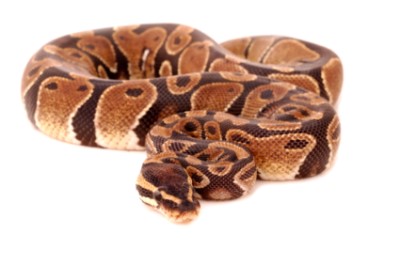Common Reasons for Surrender
Owners surrender the rat and corn snakes because they lose interest, are unable to keep pets with changing family situation, or move. You have to realize the average lifespan of this snake is 30 to 40 years and commit to raising him.
Pros
“Rats and corns” are said to be the number one choice snake among new reptile owners because they are easier to handle and don’t grow more than seven feet long.
They are North American snakes so they generally do well here in our North American climate, although heating is still needed. Their simple diet of mice/rats/birds is easy to come by, although it can get expensive.
Cons
For most people the feeding is difficult because of handling the rodents. You have to be willing to handle rodents and feed them to your snake before you take the snake home.
Diet
You can mix in frozen chicks for corns and rats in addition to frozen mice or rats. A corn may get big enough to eat a small rat, but most eat mice. Frequency of feeding depends on the age of the animal and how much the snake is fed at one time.
Do not feed these snakes live rodents because the rodent may nibble on the snake.
Exercise
Corn and rat Snakes, especially the Everglades rat snake, are active if they have branches to climb on. One snake may like a ten-gallon cage and another may want to go exploring. A black rat snake is pictured on the right.
Possible Health Issues
These snakes have few health issues as long as they are housed in a large cage and proper care is given.
Housing
The corn and rat snakes need climbing branches, hiding boxes, a hot side and cool side, and a water dish in their vivarium. Mulch for burrowing is important, too. You can put small cardboard boxes into the tank for hiding—the size of the box depends on the size of the snake. If you tend to be allergic to shavings and bark, try newspaper on the bottom of the cage.
Be sure to have a basking light over the branches on one side of the tank and set up the branches on an angle so the snake can climb and bask if he wants.
Grooming
Make sure they have enough water to soak in it to help them when shedding. When your snake sheds, be sure the skin comes off the tail or it can constrict and cause gangrene and the loss of the end of the tail. You will need to check and make sure that the eye caps shed, too.
Training
A lot of people take this snake out of the cage, but be sure he doesn’t stay out in the sun too long. Never set him out in the sun while in the cage because he will overheat.
Entertainment
They like to sleep and eat.
ADDITIONAL RESOURCES
You Want a WHAT for a Pet? A book for middle school children
For interactive discussion forum go to www.herpcenter.com
http://www.reptilerescuealliance.org/
The Great Big Book of Snakes and Reptiles by Barbara Taylor and Mark O’Shea
We want to thank Forgotten Friend reptile rescue organization and Reptiles and Amphibians Rescue Network for help with this profile.




